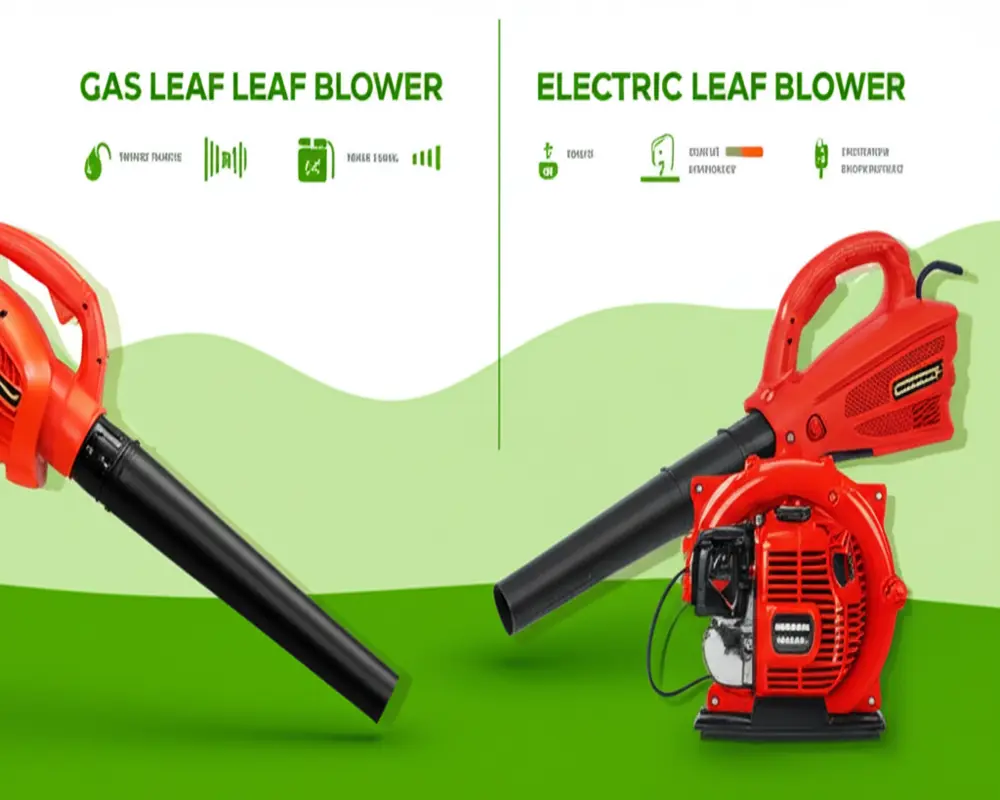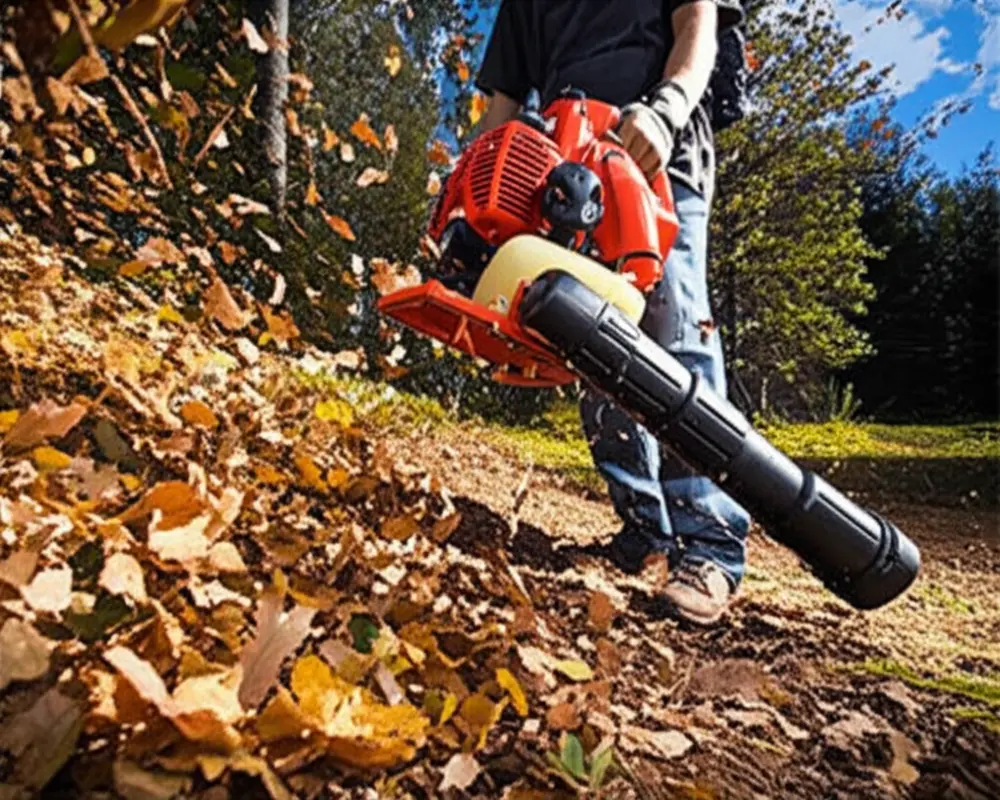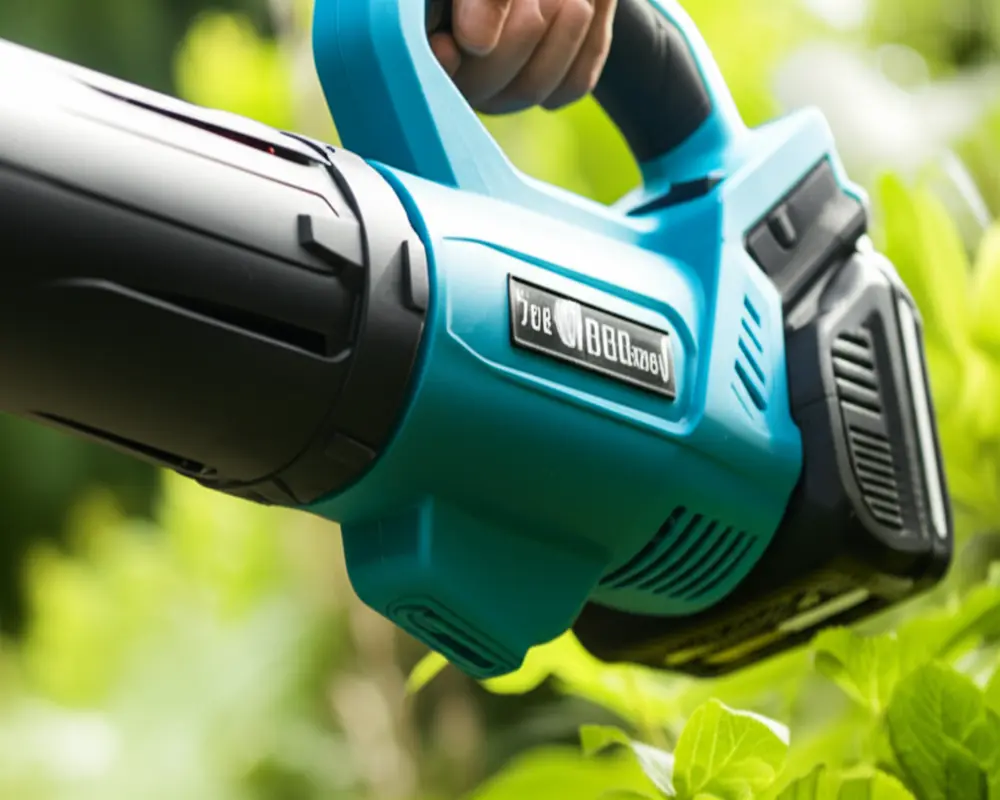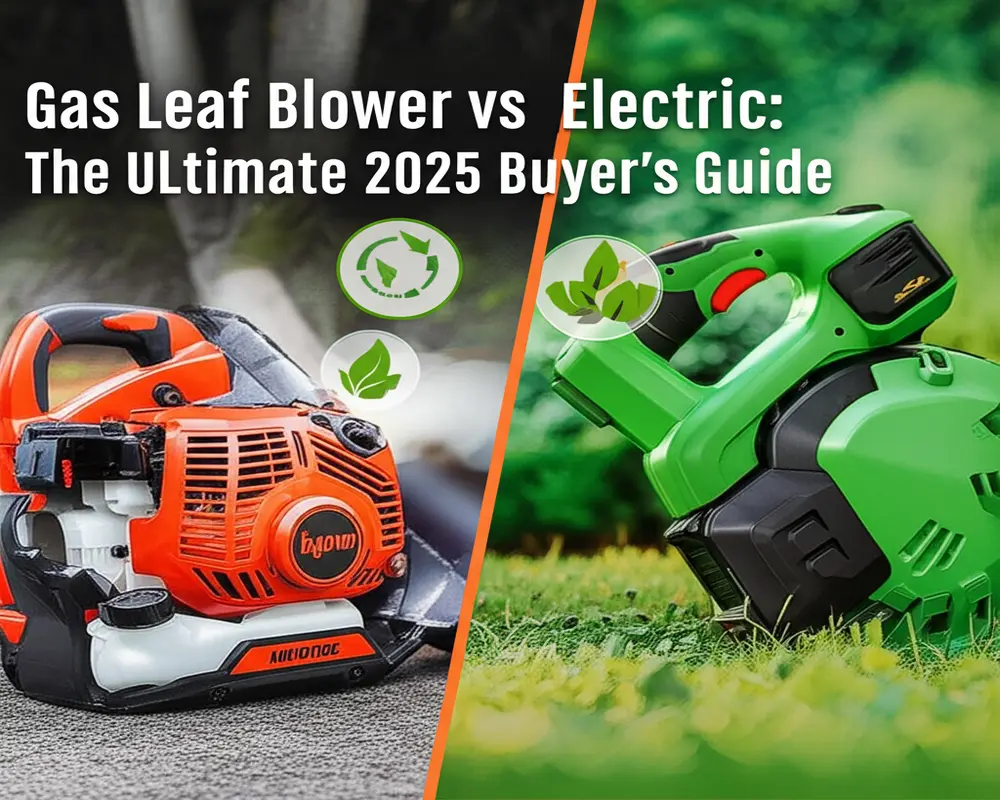Choosing the right leaf blower is crucial for maintaining a tidy yard efficiently and with minimal hassle. Whether you’re tackling stubborn wet leaves or just blowing away freshly fallen debris, the decision between a gas leaf blower vs electric model shapes your entire yard work experience. This guide offers an objective, thorough comparison of these two popular types of leaf blowers, helping you pick the best fit for your needs.
Thank you for reading this post, don't forget to subscribe!In 2025, the choice boils down to a trade-off between raw power and portability offered by gas models, against the convenience, quiet operation, and eco-friendliness of electric blowers. Let’s delve into the key aspects that distinguish these tools.
II. Executive Summary: Gas vs. Electric Leaf Blowers at a Glance
For quick insights, here’s a concise comparison of gas and electric leaf blowers to help you grasp their core differences:
| Feature | Gas Leaf Blower | Electric Leaf Blower |
|---|---|---|
| Power | High power, ideal for heavy, wet debris | Moderate power, best for light to medium debris |
| Mobility | Fully cordless, runs on fuel | Corded or cordless (battery powered) |
| Noise Level | Loud, generally over 70 dB | Quiet, typically under 60 dB |
| Maintenance | High: fuel, spark plugs, oil changes | Low: battery care, occasional motor cleaning |
| Cost (Initial & Operation) | Higher upfront and fuel expenses | Lower upfront, variable battery replacement |
| Environmental Impact | Emits pollutants and greenhouse gases | Zero direct emissions, eco-friendly |
| Weight | Heavier due to engine and fuel | Lighter, especially cordless models |
| Starting Ease | Manual pull start, can be difficult | Instant start with button |

III. Deep Dive: Understanding Gas Leaf Blowers
Gas leaf blowers operate with a small combustion engine that burns gasoline mixed with oil to generate power. This engine drives a fan that propels air at high speeds, typically between 150 to 250 miles per hour (240 to 400 kilometers per hour), making them ideal for heavy-duty yard work.
Their power output generally ranges from 400 to 900 cubic feet per minute (CFM), a key metric indicating the volume of air moved, which directly correlates with their ability to clear dense, wet, or compacted leaves and debris.
Their advantages include the ability to handle large yards and tough debris without being tethered by a cord. They offer extended run times limited only by fuel tank capacity, and their rugged build often results in long service life. However, they come with notable drawbacks such as loud noise—often exceeding 70 decibels—emissions regulated by the Environmental Protection Agency, higher maintenance demands, weight (commonly 10 to 20 pounds or 4.5 to 9 kilograms), and the hassle of fuel storage and mixing. Starting a gas blower requires a pull cord which can be challenging for some users.
Gas blowers come in several types:
- Handheld models: Compact and suitable for small to medium yards.
- Backpack blowers: Designed for comfort over extended use, ideal for large properties or professional landscapers.
- Walk-behind blowers: The most powerful, used for clearing vast spaces like parks or commercial properties.

IV. Deep Dive: Understanding Electric Leaf Blowers
Electric leaf blowers utilize electric motors powered either through a cord plugged into an outlet or by rechargeable batteries. The motor spins a fan that moves air at speeds usually between 100 to 180 miles per hour (160 to 290 kilometers per hour), with airflow volumes typically ranging from 300 to 600 CFM.
Electric blowers are divided into two main categories:
- Corded electric blowers are lightweight and provide unlimited run time but restrict user mobility due to the power cord.
- Cordless or battery-powered blowers offer freedom of movement and quieter operation but are limited by battery life, which generally ranges from 20 to 60 minutes per charge. Battery maintenance and eventual replacement add to long-term costs.
Their benefits include quiet operation with noise levels often below 60 decibels, zero direct emissions, minimal maintenance, instant electric start, reduced weight (often 5 to 10 pounds or 2.3 to 4.5 kilograms), and lower vibrations, enhancing user comfort.
However, electric blowers typically deliver less raw power than gas models, making them less effective for heavy or wet debris. Battery-powered units also require charging downtime and eventual battery replacement, which can be costly. Corded models can be cumbersome due to cord management.

V. Head-to-Head Comparison: Key Factors
1. Power & Performance
Power in leaf blowers is evaluated by two primary metrics: cubic feet per minute (CFM) indicating airflow volume, and miles per hour (MPH) measuring airspeed. Gas leaf blowers typically provide 400 to 900 CFM and airspeeds up to 250 MPH, making them suitable for clearing heavy, wet debris in large yards. Electric blowers usually range from 300 to 600 CFM and 100 to 180 MPH, adequate for lighter tasks in small to medium yards.
2. Noise Levels
Gas blowers are usually loud, exceeding 70 decibels, which can be disruptive in residential neighborhoods and harmful over prolonged use. Electric models operate quietly, often below 60 decibels, minimizing disturbance to neighbors and reducing user fatigue.
3. Weight & Ergonomics
Gas leaf blowers weigh between 10 to 20 pounds (4.5 to 9 kilograms), which can cause strain during extended use. Electric blowers are lighter, commonly 5 to 10 pounds (2.3 to 4.5 kilograms), and cordless models enhance maneuverability. Ergonomic designs in both types vary, but electric blowers tend to produce less vibration and are easier to handle.
4. Maintenance & Durability
Gas blowers require regular maintenance including fuel mixing, spark plug replacement, and engine servicing. Their mechanical complexity can lead to more frequent repairs. Electric blowers have fewer moving parts, require less upkeep, and generally last longer when batteries are well maintained.
5. Cost of Ownership
Initial costs for gas blowers are higher, with additional expenses for fuel and maintenance. Electric blowers have a lower purchase price but may incur battery replacement costs over time. Corded electric models have the lowest operating expenses.
6. Portability
Gas blowers offer unrestricted mobility without cords, advantageous for large properties. Cordless electric blowers provide similar freedom but limited run time. Corded electric blowers restrict movement, requiring proximity to power outlets.
7. Environmental Impact
Gas blowers emit pollutants contributing to air pollution and noise pollution. Electric blowers produce zero direct emissions and operate silently, making them environmentally preferable, especially where local regulations restrict gas blower use.
8. Ease of Use & Starting
Electric blowers start instantly with a button press, offering superior user convenience. Gas blowers require manual pulling of a cord that can be strenuous and inconsistent, especially in cold weather.
9. Safety
Gas blowers expose users to fuel fumes and require careful handling of flammable liquids. Electric blowers eliminate fuel hazards but require caution with battery charging and cord management to avoid tripping.
VI. Which One Is Right for You? Decision-Making Guide
If you manage a large yard or need to clear heavy, wet debris regularly, a gas leaf blower is likely your best choice. Its power and extended runtime suit tough tasks and professional use. However, if you have a small to medium yard, prefer quieter operation, or prioritize environmental impact, an electric leaf blower—especially a battery powered model—may be more suitable.
Consider your tolerance for maintenance, noise levels, and initial investment. Those sensitive to noise or living in regulated communities often find electric models the better option. For detailed advice on efficient garden tool use, see our guide on hand cultivator buying.
VII. Beyond Gas vs Electric: Additional Considerations
Modern leaf blowers often come as combo units incorporating blower, vacuum, and mulcher functions, enhancing versatility. Choosing between handheld and backpack designs affects user comfort and task duration. Brand reputation and warranty coverage also impact long-term satisfaction. Useful accessories like variable speed triggers and extension tubes add to convenience and effectiveness.
VIII. Expert Tips & Best Practices
Maintaining your leaf blower extends its lifetime. For battery-powered units, follow proper charging cycles and storage guidelines as outlined by Battery University. Gas models require safe fuel storage and regular engine checks. Always wear recommended safety gear, including ear and eye protection. Employ efficient blowing techniques, moving debris with steady, sweeping motions rather than high blasts to conserve energy and reduce noise.
IX. Frequently Asked Questions (FAQs)
- Is the use of gas leaf blowers being phased out?
- Many regions are regulating or banning gas leaf blowers due to their environmental impact. Alternatives like electric blowers are increasingly favored.
- What is the typical battery lifespan for electric leaf blowers?
- Batteries last between 3 to 5 years depending on usage and care. Replacement costs should be considered when purchasing cordless models.
- Can electric blowers handle wet leaves effectively?
- Electric blowers perform best with dry to moderately damp leaves. Heavy, wet debris is better managed with gas blowers.
- What do CFM and MPH mean in leaf blowers?
- CFM (cubic feet per minute) measures air volume and MPH (miles per hour) measures air speed—both determine blower effectiveness.
- When should I use a walk-behind blower?
- Walk-behind blowers are suited for large properties or commercial landscaping where maximum power and coverage are required.
X. Conclusion: Making Your Informed Choice
Selecting between a gas leaf blower vs electric model depends on your yard size, debris type, noise tolerance, environmental values, and budget. Gas blowers excel in power and mobility for demanding tasks, while electric blowers offer quiet, eco-friendly operation with minimal upkeep.
Weigh all factors carefully to enhance your yard maintenance experience. For additional advice on garden tools and maintenance, visit our best pruning shears guide and explore practical gardening tips.
Take the next step today to achieve a cleaner, more enjoyable yard with the leaf blower that suits your lifestyle best.

